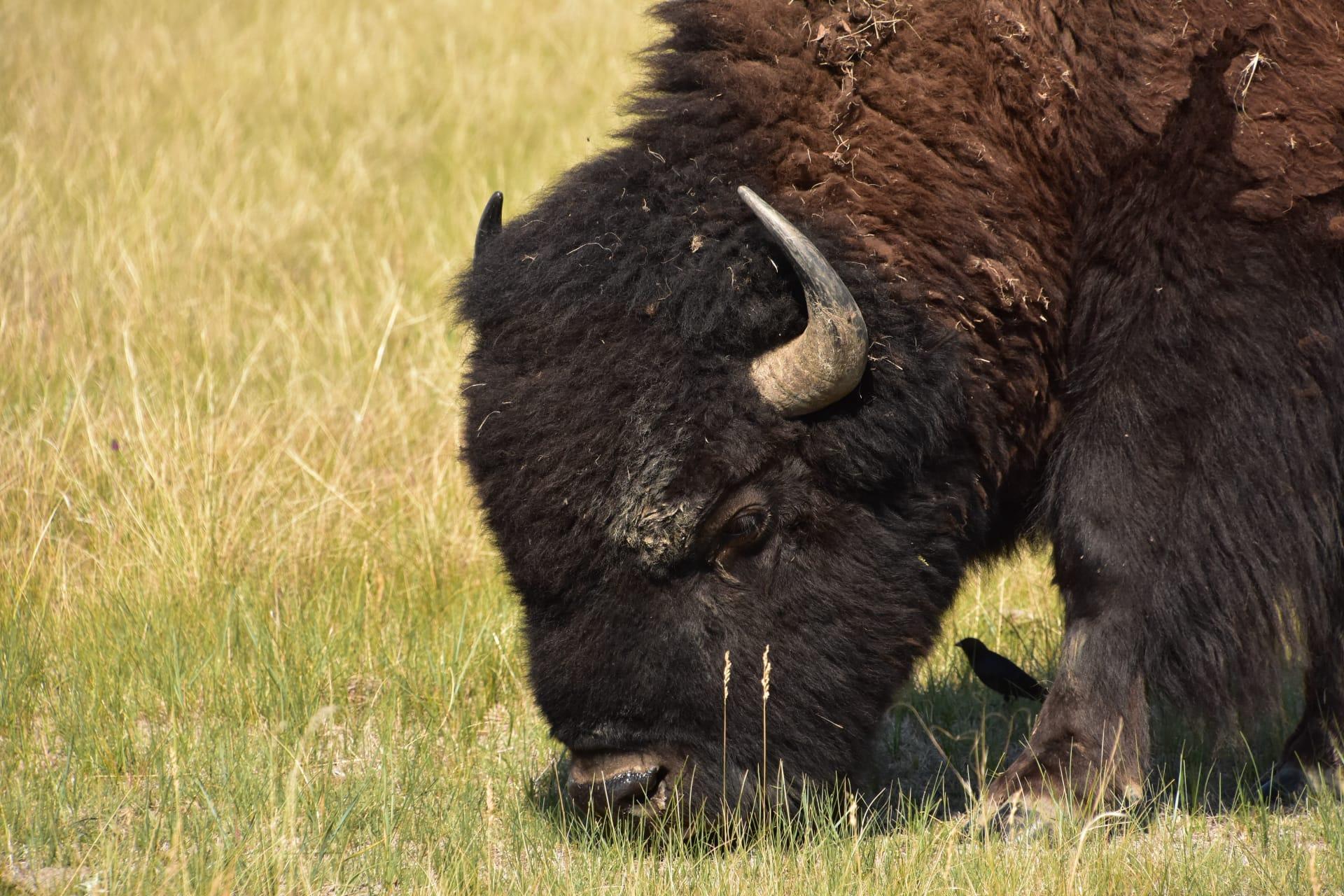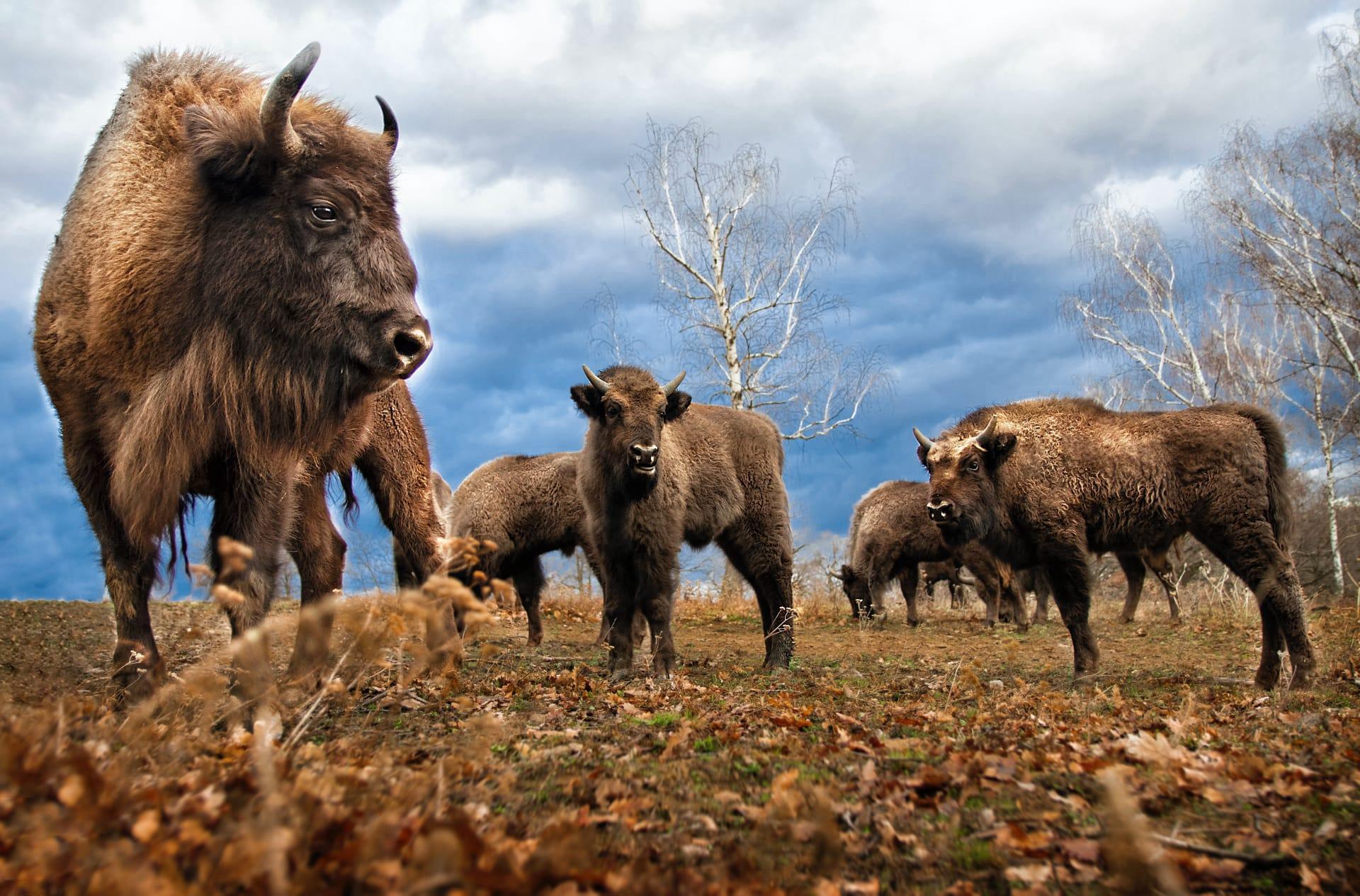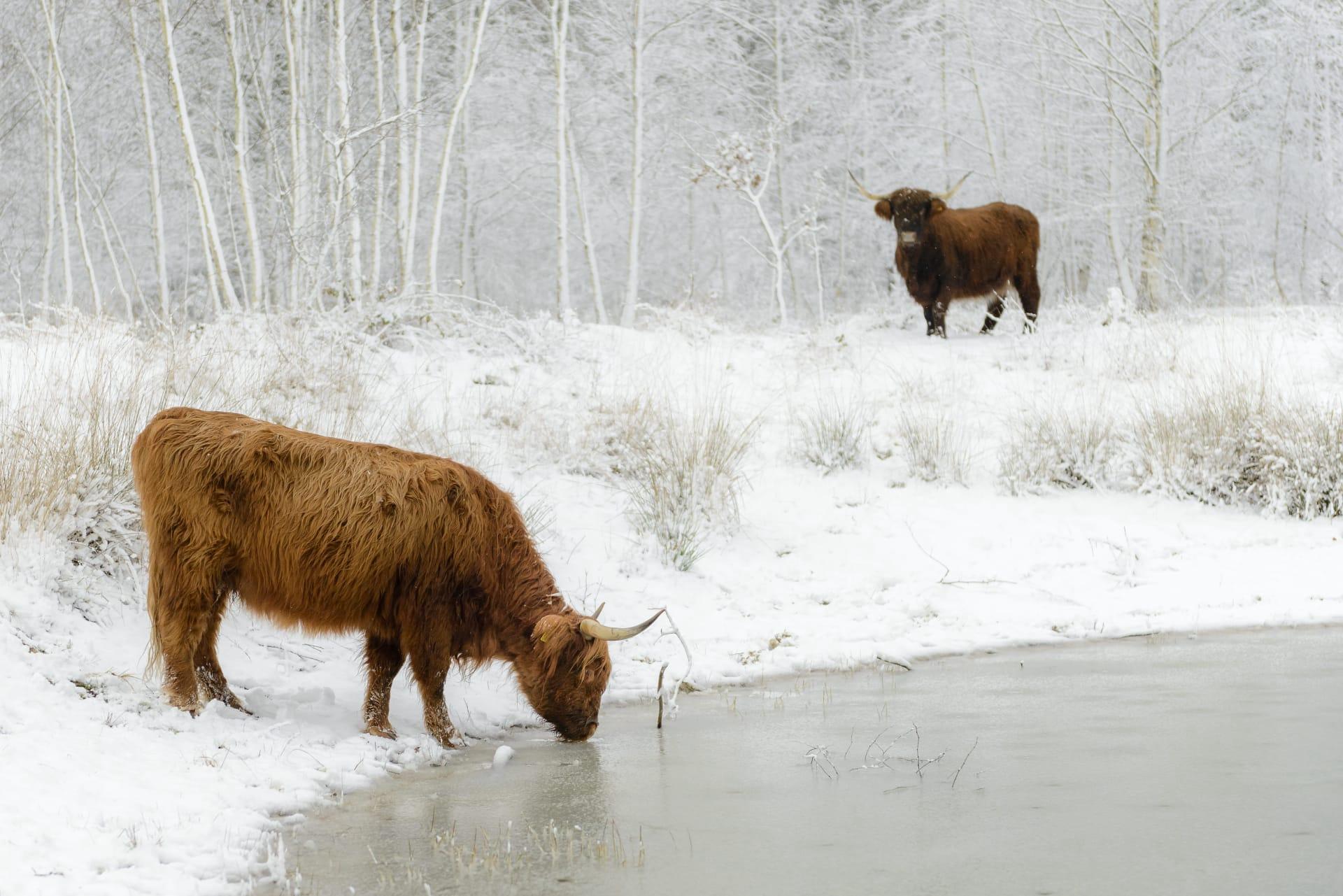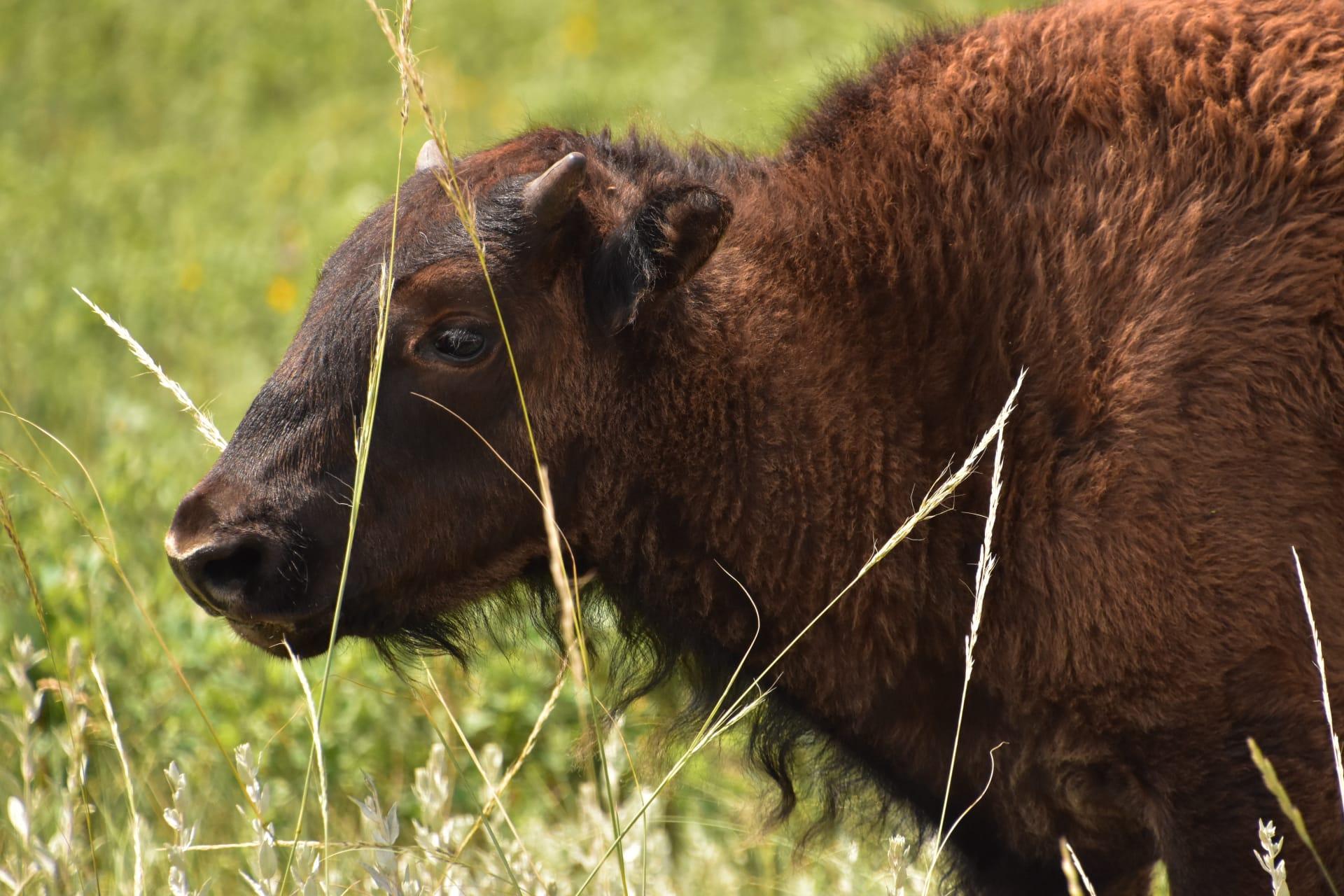1
The American Bison, often simply known as the buffalo, is the largest land mammal in North America. Adult male bison, called bulls, can weigh up to 2,000 pounds (around 907 kilograms) and stand up to 6 feet (about 1.8 meters) tall at the shoulder. Females, known as cows, are slightly smaller, typically weighing up to 1,000 pounds (approximately 453 kilograms). This immense size makes them a symbol of strength and resilience in the American West.
Bison have a unique adaptation for survival in harsh climates: their fur. Their coat has two layers—an outer layer of coarse guard hair and a thick undercoat of fine, woolly hair. This combination provides excellent insulation against extreme cold. In winter, their coat becomes so thick that snow can settle on their backs without melting, demonstrating their incredible resistance to freezing temperatures.

2
Bison play a crucial ecological role in their habitats. They are keystone species in the North American prairies, meaning their presence and behavior significantly shape the ecosystem. By grazing, bison naturally manage grasslands, encouraging the growth of native plants. This grazing pattern also creates habitats for many other species, from insects to birds and small mammals, promoting biodiversity.
Interestingly, bison have a remarkable impact on the soil as well. Their hooves naturally till the earth as they roam, aiding in seed dispersion and aeration of the soil. This activity helps in the regeneration of grasslands and maintains the health of the prairie ecosystem. Their wallowing behavior—rolling in the dirt—creates depressions that can hold water, benefiting smaller wildlife and leading to increased plant diversity.

3
The social structure of bison herds is fascinating. Herds are typically matriarchal, led by older, experienced female bison. These herds can range from a few dozen to several hundred animals. During the mating season, known as the rut, male bison join the female herds and compete for mates. This period is characterized by intense battles between males, showcasing their strength and dominance.
Bison calves are born in the spring after a gestation period of about 9 months, similar to humans. Calves can walk within hours of birth and are quite playful. They are born with a reddish-brown fur, earning them the nickname "red dogs." Over the first few months, their fur darkens to the characteristic brown of adult bison, and they start to grow the hump and horns for which bison are known.

4
Bison have a significant historical and cultural importance to many Native American tribes. They were central to the lifestyle and survival of these tribes, providing food, clothing, and materials for shelter and tools. Every part of the bison was used, reflecting a deep respect for the animal and the principle of not wasting natural resources. Bison also hold spiritual significance in many indigenous cultures, symbolizing abundance, strength, and determination.
Despite their size, bison are surprisingly agile and fast. They can run up to speeds of 35 miles per hour (approximately 56 kilometers per hour) and are capable of jumping over 6 feet (about 1.8 meters) vertically. Their agility is especially notable considering their large size and bulky build. This speed and jumping ability are defensive adaptations that help them escape predators and navigate their rugged habitats.

5
The American Bison's sense of smell and hearing are exceptionally well-developed, compensating for their relatively poor eyesight. They rely heavily on these senses to detect predators and communicate within the herd. Their acute sense of smell allows them to detect scents from great distances, essential for survival in the wild.
Conservation efforts for the American Bison have been a remarkable success story. From the brink of extinction in the late 19th century due to overhunting and habitat loss, bison numbers have rebounded significantly. Today, they are no longer listed as endangered, thanks to rigorous conservation efforts and protected reserves. This recovery highlights the importance of sustainable wildlife management and the resilience of the species.